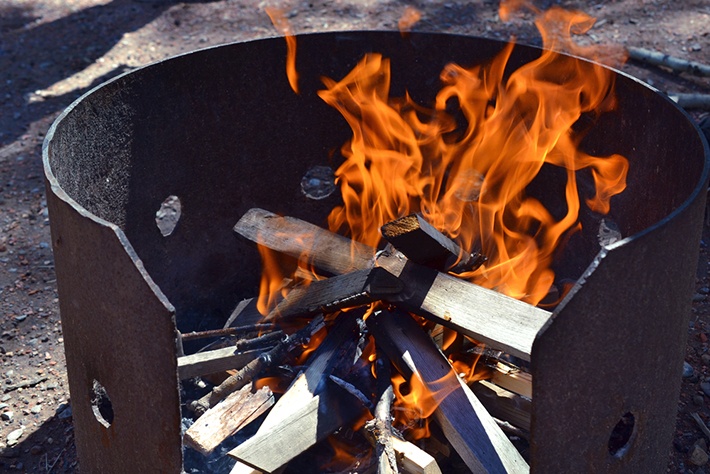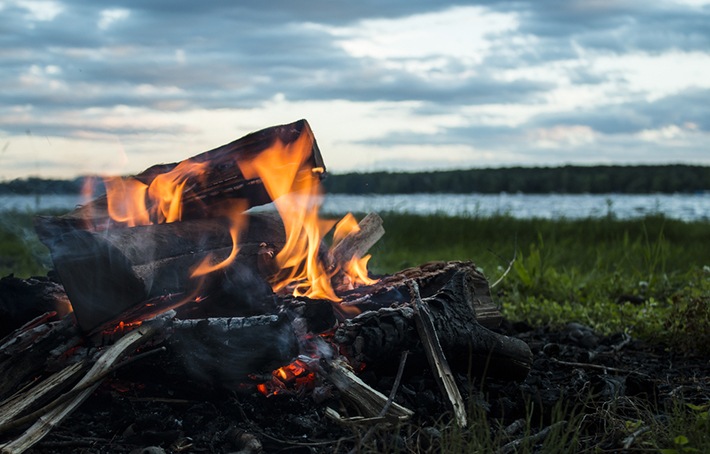After spending a whole day hiking in the wilderness, I can say that I’ve had the most enjoyable time somewhere in the evening by the campfire.
Out there in the wild, at lower temperatures and being exhausted, there is nothing like a warm crackling fire and some hot beverages.
But, I’ve always wondered how hot does a campfire get and is there something that I can do to tune it a bit so I can get it even hotter or less hot.
After some research, I have some info related to this matter, and I’m going to share it with you.
More...
Metal and Fire
The campfire can get hot enough to melt down some metal alloys.
For example, if you want to, you can melt down aluminum with campfire if you tune it enough to reach something little above 1200°F.
Some other types of metal alloys will need higher temperatures to melt, and it’s unlikely that you will need the campfire to get that hot.
So, the punch line is that you could achieve high temperatures with a campfire, but you won’t need them.

People often ask me:
- How hot is black fire?
- How hot is green fire?
It is good to know that the color of the flames won’t tell you the exact temperature of the campfire, so that isn’t the real sign or guide.
The color of the flames is related to what kind of fuel you are burning in the campfire.
But what temperatures you could achieve from the average campfire?
The average campfire can give you around 930°F, which is ideal for cooking (including grilling and BBQ), drying the clothes or keeping you warm after the long day.
The Ultimate Temperature Gadget

Among many other things in your bag, bringing along the compact thermometer just to check how hot is the campfire is pretty much redundant.
Instead of looking for the ideal thermometer just for this matter, you already have useful utensil – your palm.
Well, I guess that I don’t have to mention that when checking the fire with the palm you need to be careful.
All you need to do is to place your palm carefully over the fire somewhere at the cooking height and then start counting.
Once again, please be careful when using this method. From my experience, it is better to stop placing the palm over the fire after you are confident that the fire has medium temperature and wait for a while to reach the higher temperatures.
Discover more: How to Get Campfire Smell Out of Clothes
Two Campfire Factors

Further, the campfire temperature will also depend on the types of wood and air flow.
At the start, you will use tinder wood because you can quickly collect it and use it to start the fire. The tinder will burn at the lower temperatures.
The tinder will catch fire quickly, and after that, you can add kindling. After the fire starts burning from tinder, the thickness of the kindling will help it to achieve more temperature.
Finally, the fuelwood comes at the end, and it will provide highest temperatures.
It could happen that you will need to start the fire with the wet wood, and this could be an intense task. Therefore, I’ve written an article on How to Start a Fire with Wet Wood.
But above all, keep in mind that the air flow will also affect how your campfire will behave. If you don’t provide enough air flow, the fire will continue to burn at lower temperatures.
CONCLUSION
I hope that I provided you with the insight look of what is going on inside the campfire regarding temperatures.
So far, I didn’t use the campfire to melt down any metals because everything I’ve needed outdoors is a fire to make a cup of tea or to cook some quick meal.
And at the end of this brief article, always have in mind that the safety comes first. Therefore, have in mind these few things listed below:
